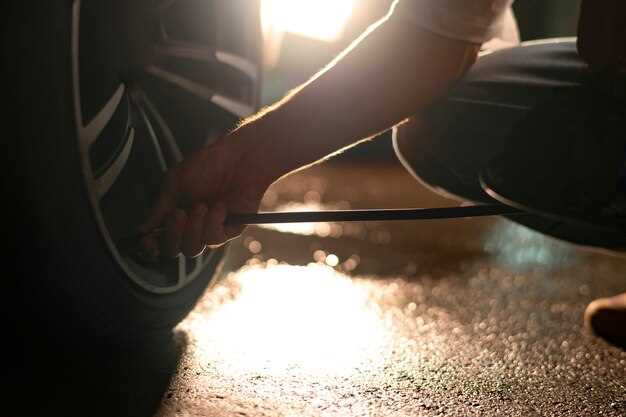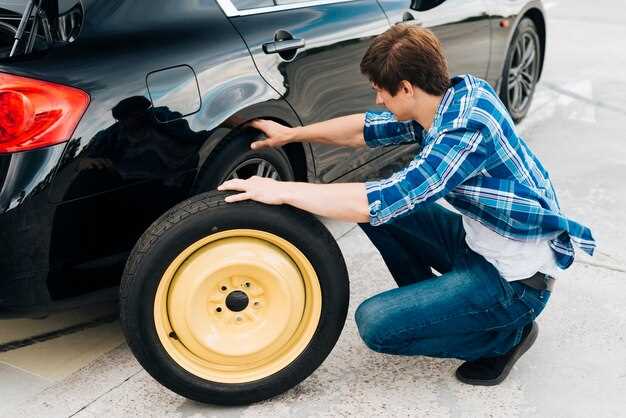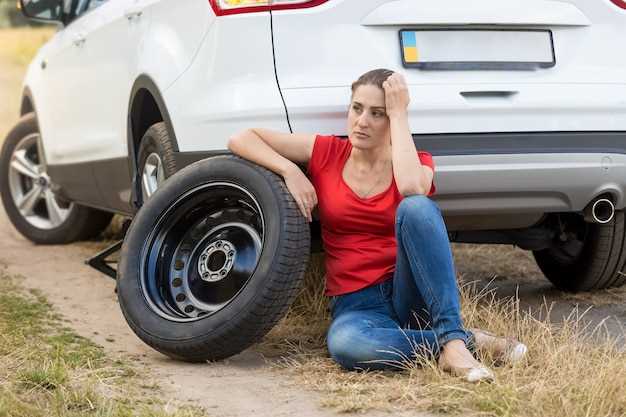
When it comes to sports cars, performance is often the primary focus. However, one aspect that can significantly affect the driving experience is tire noise. The sound produced by tires on the road can be not only distracting but also detrimental to the overall enjoyment of high-speed driving. This phenomenon stems from several factors, including tire composition, tread design, and the nature of the surfaces on which these vehicles operate.
The intricate relationship between tire characteristics and their interaction with the road plays a crucial role in the amount of noise produced. Sports car tires are typically designed for optimal performance and handling, which can lead to increased noise levels when they encounter various surfaces. Additionally, the materials used in tire manufacturing can either absorb or amplify sound, further influencing the auditory experience of the driver and passengers.
Understanding the causes of tire noise in sports cars is essential for enthusiasts looking to enhance their driving experience. This knowledge allows owners to make informed choices about tire selection and maintenance practices that can effectively reduce unwanted noise, leading to a more enjoyable and quieter ride.
Understanding the Sources of Tire Noise in Sports Cars

Tire noise is a significant factor that can affect the driving experience in sports cars. This noise can come from various sources, each contributing to how the vehicle interacts with the road and ultimately impacting feedback to the driver. Understanding these sources is essential for reducing noise and enhancing comfort.
Here are the primary sources of tire noise in sports cars:
- Tread Pattern: Different tread designs can generate varying noise levels. Aggressive patterns designed for grip can produce higher noise due to increased surface area contact with the road.
- Tire Composition: The materials used in tire construction influence sound production. Softer rubber compounds often offer quieter rides compared to harder compounds that provide better performance but more road noise.
- Road Surface: The type and condition of the road surface significantly affect tire noise. Rough or uneven surfaces can increase noise levels, while smoother asphalt can help minimize it.
- Speed: As speed increases, tire noise tends to rise. Higher speeds amplify the sound generated by the interaction between the tires and the road.
- Tire Inflation Pressure: Incorrect tire pressure can alter the tire’s footprint on the road, leading to increased noise. Properly inflated tires optimize road contact and reduce sound generation.
Addressing these sources of noise can enhance the overall driving experience in sports cars by improving feedback and comfort. Potential solutions include:
- Using tires designed specifically for noise reduction without compromising performance.
- Regularly maintaining proper tire pressures to ensure optimal road interaction.
- Choosing performance tires with tread patterns focused on quieter operation.
- Opting for smoother road surfaces whenever possible or planning routes that avoid rough conditions.
By identifying the sources of tire noise and implementing mitigating strategies, sports car enthusiasts can achieve a more enjoyable and quieter driving experience while still enjoying the vehicle’s performance capabilities.
The Impact of Tire Composition on Road Feedback

The composition of tires plays a crucial role in how drivers perceive road feedback, particularly in high-performance sports cars. Tires are made from various materials, including rubber compounds, fillers, and reinforcements, each influencing their performance characteristics. The right combination of these materials affects not only grip and durability but also the sensations transmitted to the driver.
Tires with a softer rubber compound typically offer enhanced grip, allowing for better performance during cornering and acceleration. However, these tires may sacrifice some road feedback, leading to a less communicative driving experience. Conversely, harder compounds can provide sharper feedback but may result in a harsher ride and diminished traction. Striking the perfect balance between grip and feedback is essential for sports cars aimed at delivering an exhilarating driving experience.
Additionally, the tread design contributes significantly to road feedback. Varied patterns can enhance or dampen vibrations transmitted through the tire, altering the driver’s connection to the road. For instance, asymmetrical or directional tread designs may improve handling and feedback at high speeds, while a more uniform pattern can prioritize comfort over performance. Manufacturers often experiment with different compositions and designs to achieve the desired feedback characteristics.
Moreover, the air pressure within the tires also affects the overall feedback. Properly inflated tires ensure optimal contact with the road surface, enhancing the information relayed to the driver. Under- or over-inflated tires can lead to a disconnect between the car and the road, diminishing the overall driving experience.
In summary, tire composition has a significant impact on road feedback in sports cars. The interplay of rubber compounds, tread designs, and air pressure determines how much information is conveyed to the driver, influencing both performance and driving enjoyment. Car enthusiasts should consider these factors when selecting tires to enhance their sports car experience.
How Tread Pattern Influences Noise Levels
The tread pattern of a tire plays a significant role in determining the noise levels experienced in sports cars. Various designs can either amplify or dampen noise feedback, influencing the overall driving experience. Understanding the relationship between tread patterns and tire noise is crucial for both manufacturers and drivers seeking a quieter ride.
Different tread patterns can cause varying levels of road noise due to how they interact with the surface of the road. Generally, more aggressive tread patterns, which feature larger grooves and blocks, tend to produce higher noise levels. This is primarily because these features allow for more air pump action and greater contact with the road, leading to increased vibrations transmitted to the cabin.
Conversely, tires designed with a symmetrical or asymmetrical tread pattern often generate lower noise levels. These designs help in distributing the forces acting on the tire more evenly, minimizing the feedback that could contribute to noise. Additionally, quieter tires usually feature closed or less aggressive blocks, reducing the amount of air that is pushed around during operation.
| Tread Pattern Type | Noise Level | Characteristics |
|---|---|---|
| Aggressive | Higher | Larger grooves, more voids, and bigger blocks |
| Symmetrical | Lower | Even distribution, smaller voids, and closed blocks |
| Asymmetrical | Moderate | Varied tread for improved handling and reduced noise |
In summary, the tread pattern is a key factor in influencing tire noise levels. By selecting the appropriate tread design, drivers can enhance their driving experience through reduced noise, creating a more enjoyable atmosphere inside the vehicle. Understanding these dynamics allows both manufacturers and consumers to make informed choices when it comes to tire selection for sports cars.
Effects of Tire Pressure on Noise and Performance
Tire pressure plays a crucial role in the overall performance and noise levels experienced in sports cars. Properly inflated tires ensure optimal contact with the road, which significantly enhances driving feedback. When tires are under-inflated, they tend to deform more than intended, resulting in increased rolling resistance. This deformation contributes to higher energy consumption and can lead to a noticeable rise in tire noise as a result of increased flexing and vibrations.
On the other hand, over-inflated tires may lead to reduced road contact, resulting in a harsher ride quality. The lack of adequate contact surface can diminish grip and responsiveness, affecting not only performance during spirited driving but also increasing potential tire noise. A harder tire tends to transmit more noise from the road surface while diminishing the feedback felt by the driver.
Maintaining the recommended tire pressure is essential for balancing performance and mitigating noise. Regularly checking and adjusting tire pressure can ensure that sports cars operate at their best, delivering a quiet and responsive driving experience. Drivers should consider utilizing a tire pressure monitoring system to help maintain optimal pressure levels, thus enhancing both performance and comfort on the road.
Upgrading Tires: Options for Quieter Rides
When it comes to enhancing the driving experience of sports cars, upgrading tires can significantly impact noise reduction. The right tires not only improve performance but also help mitigate road noise that can infiltrate the cabin. Choosing tires specifically designed to minimize noise can result in a quieter ride and a more enjoyable experience.
One effective option for quieter tires is to select models that feature advanced tread patterns. These patterns are engineered to reduce the amount of sound generated during contact with the road. Look for tires labeled as “low noise” or those incorporating technology that absorbs vibrations. Additionally, tires made from specialized rubber compounds can further diminish noise levels while providing excellent grip and feedback.
Another consideration is the size and type of the tire. Wider tires, while offering increased grip, can also lead to heightened road noise. Opting for slightly narrower tires can help balance performance with reduced noise levels. Furthermore, all-season tires often provide a quieter ride compared to summer performance tires, making them a suitable choice for those prioritizing comfort over maximum speed.
Lastly, ensuring that tires are properly inflated and well-maintained can also play a vital role in noise reduction. Under-inflated tires can create excessive road noise and compromise safety. Regularly checking tire pressure and alignment not only extends tire lifespan but also enhances the overall driving experience by minimizing disruptive noise and improving road feedback.
Techniques for Sound Insulation in Sports Cars
High-performance sports cars are designed for speed and agility, but this often comes at the cost of increased tire noise and unwanted road feedback. To improve the driving experience, various sound insulation techniques can be implemented. These techniques aim to minimize the impact of external noise while preserving the car’s athletic characteristics.
- Sound Deadening Materials:
Applying specialized sound deadening materials inside the cabin can significantly reduce noise transmission. These materials can be added to:
- Floor panels
- Door skins
- Wheel arches
- Trunk areas
- Acoustic Foam:
Using acoustic foam in strategic locations can absorb sound waves and reduce reverberation. Ideal placements include:
- Behind the dashboard
- Under the headliner
- In the rear cabin area
- Resonance Tuning:
Modifying the resonance characteristics of the vehicle can help mitigate undesirable noise frequencies. This process can involve:
- Adjusting engine mounts
- Enhancing exhaust systems to provide a sportier sound without excess loudness
- Tire Selection:
Choosing tires specifically designed for reduced noise can make a significant difference. Considerations include:
- Tread pattern
- Rubber compounds
- Noise-reducing features like foam inserts or thicker sidewalls
- Window Sealing:
Ensuring proper sealing of windows and doors can minimize wind and road noise entering the cabin. Enhanced seals can include:
- Double sealing systems
- High-quality weather stripping
- Engine and Transmission Mounts:
Upgrading to softer engine and transmission mounts can dampen vibrations and reduce noise. This keeps engine feedback from transmitting harshly into the cabin.
By implementing these techniques, sports car enthusiasts can enjoy an exhilarating driving experience while significantly diminishing the distractions caused by tire and road noise.
